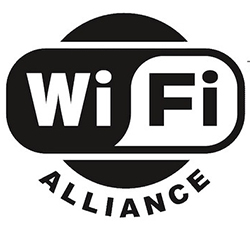Jan 13, 2016Wi-Fi and the Internet of Things have never made good bedfellows. Wi-Fi's strengths—long range, high bandwidth—are overshadowed by its one major deficit: high power consumption.
But the Wi-Fi Alliance is introducing a new wireless networking protocol designed to make Wi-Fi an optimal communications standard for IoT devices, both in the commercial realm (industrial, retail, agriculture and smart-city environments) and in consumer-facing smart-home, connected-car and digital health-care products. The protocol, known as IEEE 802.11ah—which the Wi-Fi Alliance dubs "HaLow"—uses the unlicensed 900 MHz band, as opposed to the 2.4 GHz or 5 GHz bands employed by the existing Wi-Fi standards, 802.11b/g/n and 802.11ac.

Using the 900 MHz band means HaLow radios can propagate their signal further than the other Wi-Fi standards. In fact, the Wi-Fi Alliance reports, HaLow has doubled the current Wi-Fi read range. No official indoor or outdoor range for 802.11ah has yet been published, but present Wi-Fi routers can pick up signals from a distance of between 100 and 200 feet indoors, or 300 to 800 feet outdoors. This means that even at the low end of that transmission range, HaLow devices will be readable at twice the distance from which current Bluetooth radios (commonly used in IoT devices) can be read. And, just like cordless phones, which also utilize 900 MHz, HaLow will be able to penetrate walls and other interior obstacles.
So HaLow features lower power and a longer range than Wi-Fi radios that are presently ubiquitous. However, the HaLow specification allows for data rates ranging from 150 kilobytes per second up to 18 megabytes per seconds (depending on the access point's configuration. That is a far slower data rate than the 7 gigabytes per second that is possible with 802.11ac.
Still, there are many IoT use cases for which that low data rate would not be a hindrance. In industrial applications, for instance, an environmental sensor attached to a motor or heating duct would need to transit only a small batch of data periodically. In a smart home, a sensor mounted inside an appliance, such as a stove or washing machine, would also need to send only small, periodic data packets. A wearable device, such as a fitness tracker, collecting and transmitting biometric data, would have a similar transmission pattern.
Currently, many IoT devices use Bluetooth radios to transmit data to a hub or digitally tethered device, such as a smartphone or tablet, which then forwards that data to a cloud-based server via a Wi-Fi access point or a cellular network. But because HaLow is an IP-based protocol, it connects directly to the nearest Wi-Fi access point (assuming that access point supports HaLow). Until manufacturers begin selling products with HaLow radios, however, exactly how HaLow's power consumption compares to that of a Bluetooth radio remains to be seen—but HaLow will be significantly more energy-efficient than today's Wi-Fi radios, according to the Wi-Fi Alliance.
While some chipmakers are starting to sample HaLow products, the protocol is still moving through its final standardization steps, and the Wi-Fi Alliance does not expect to begin certifying HaLow devices, including Wi-Fi access points and routers, until 2018. Wi-Fi access points that support HaLow will likely support other Wi-Fi standards as well.
IOT Journal asked Nick Warren, the founder of Metasensor—a startup that is making small Bluetooth-powered sensors designed to make it easier for consumers to track the locations of their valuables (the company unveiled a wireless motion-tracking system in September 2015)—what he thinks of the HaLow specification.
"I think Wi-Fi HaLow is a very interesting potential standard, in that it aims to greatly increase a device's signal transmission distance while also extending battery life," Warren wrote in an email. "As I understand it, there are a few major hurdles at this point including: (a) the interoperability of IoT devices developed using HaLow outside of the U.S., where regulations of the HaLow frequency band might vary, (b) availability of HaLow radio components that are tested and market-ready, (c) hardware and app integration support by major smartphone manufacturers, and (d) FCC certification for HaLow-based devices. Once these issues are sorted out, and we start to see the large-scale adoption of reliable devices using HaLow, it could be a very cool standard for IoT companies."
Warren added, however, that he has no intentions of moving away from Bluetooth technology at this time. "Bluetooth Smart [also known as Bluetooth Low Energy] was based on serving the maximum number of users since Bluetooth Smart is now so ubiquitous," he wrote. "We developed our API [application programming interface] to serve as the connective tissue between Bluetooth Smart and [devices such as laptops or mobile phones that use communication] protocols with greater transmission distances (e.g., GSM or ZigBee)."
As for what impact HaLow could have on industrial IoT applications, Richard Soley, the Industrial Internet Consortium's executive director, says he is pleased to see the forthcoming HaLow standard, which will help to ensure that "low-power wireless devices will continue to be more reliable."
But Soley, who is the chairman and CEO of the Object Management Group at the Industrial Internet Consortium, adds, "The more pressing issues that need to be addressed can be found at the higher-level communications layer with semantic integration. The Industrial Internet Consortium's parent organization, Object Management Group, is currently addressing these problems head-on with semantic integration standards in many vertical markets."
